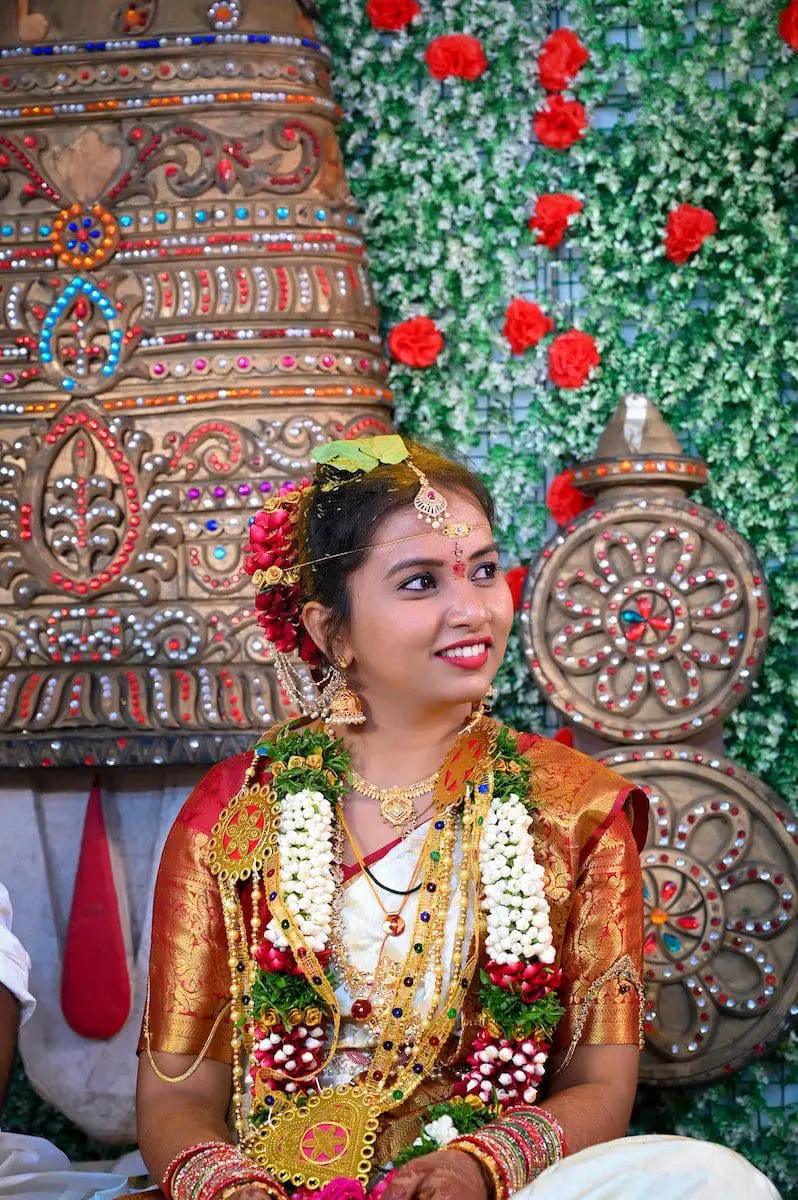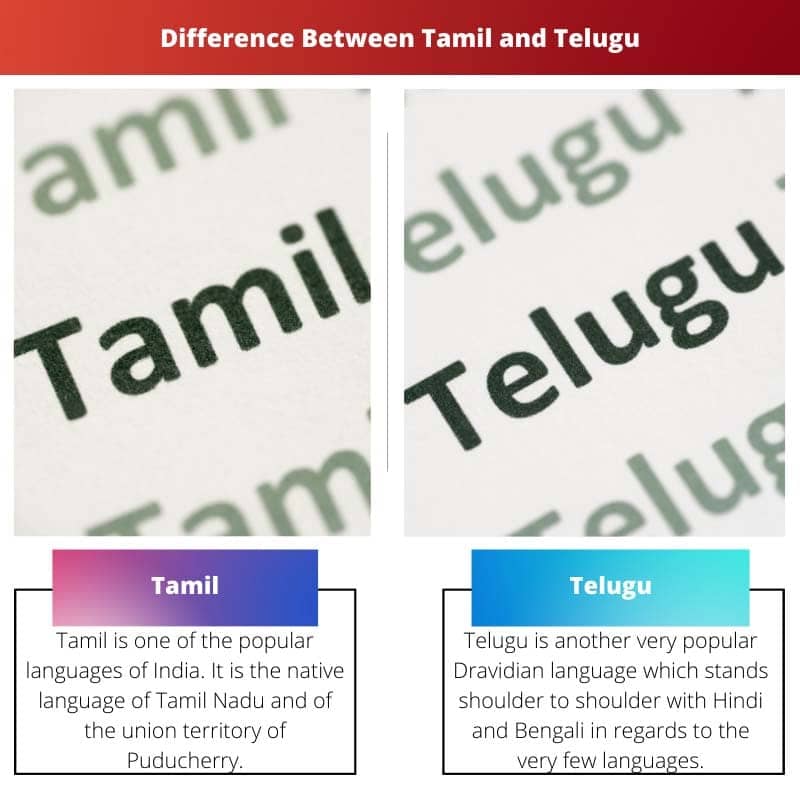The country, India, is referred to as a “museum of languages”. The reason behind this is that in India, a large number and variety of languages dwell.
There are also various dialects spoken in India. There is enormous diversity among all the languages existing in India.
This is because of the vastness of the country. This vastness gives rise to various cultural as well as geographical differences.
Within this language family, two prevalent languages are Tamil and Telugu. Although they belong to the same language family, they have major differences.
Key Takeaways
- Tamil and Telugu are two distinct Dravidian languages primarily spoken in the southern Indian states of Tamil Nadu and Andhra Pradesh, respectively.
- The Tamil script has 12 vowels and 18 consonants, while the Telugu script has 16 vowels and 36 consonants.
- Although both languages share some common words and roots, they have unique grammar, syntax, and pronunciation, making them mutually unintelligible.
Tamil vs Telugu
Tamil is a language spoken in the Indian state of Tamil Nadu. It is one of the oldest and most widely spoken languages in the world, with a rich literary tradition. Telugu is a language spoken in the Indian states of Andhra Pradesh and Telangana. It is the third most spoken language in India.

Comparison Table
| Parameter of Comparison | Tamil | Telugu |
|---|---|---|
| Origin | Its origin is dated between 3 BC and 3 AD. | Its origin is dated back to 575 AD. |
| Attributed to | It is attributed to Sangam literature | It is attributed to Renati Cholas. |
| Influenced by | Sanskrit widely influences the language | The language is independent of the Sanskrit language and has adopted Greek, Urdu, Chinese, and Marathi words. |
| Script | There are 12 vowels and 18 consonants in this language. | There are 16 vowels and 41 consonants in this language. |
| Native of | The language is the official language of the state of Tamil Nadu. | The language is the official language of Andhra Pradesh and Telangana. |
What is Tamil?
Among the various languages in India, Tamil is one of the most popular languages in India. It is the native language of Tamil Nadu and the union territory of Puducherry.
The official language of Sri Lanka is also Tamil. Around the beginning of the 21st century, there were more than 66 million Tamil speakers.
The origin of this language is centuries older than the Christian era. The origin date is between 3 BC and 3 AD.
Tamil is not just the most popular but is also considered the oldest among all the Dravidian language families. In 2004, the Government of India declared Tamil a classical language.
Tamil is the only language in the Dravidian family that has been given the status of a classical language. This implies that Tamil meets all the criteria for being considered a classical language- the origin of it is ancient, its tradition is independent, and it has an adequate amount of ancient literature.
Also, the first Indian language that was printed and published was Tamil.
The amazing part about this language is that this language is still widely popular and spoken by many people. This is not the case with other ancient languages like Sanskrit and Aramaic.

What is Telugu?
Telugu is another very popular Dravidian language which stands shoulder to shoulder with Hindi and Bengali in regards to the very few languages that have a primary official status in not just one Indian state. It is the official language of Andhra Pradesh and Telangana.
This language is also highly popular and spoken by people living in Odisha, Kerala, Karnataka, Chhattisgarh, Andaman, and the Nicobar Islands. Around the beginning of the 21st century, Telugu speakers were more than 75 million.
According to the 2011 census, there were 82 million people who spoke Telugu as their native language. In India, Telugu occupies the fourth position in the language with the most native speakers.
Also, Telugu is one of the most rapidly growing languages in the United States. The script of Telugu comes from the Calukya dynasty of the 6th century. It is related to the Kannada language.
Telugu is known to be a very sweet language, which is why this language is nicknamed the “Italian of the East”.

Main Differences Between Tamil and Telugu
- Tamil is one of the oldest Dravidian languages, originating between 3 BC and 3 AD, whereas Telugu existed in 575 AD.
- Tamil is the official language of Tamil Nadu, whereas Telugu is the official language of the state of Andhra Pradesh and Telangana.
- Tamil is said to be influenced by the Sanskrit language a great deal. On the other hand, Telugu is independent of the Sanskrit language and has adopted words from Greek, Urdu, Chinese, and Marathi.
- In Tamil, there are 12 vowels and 18 consonants, whereas in Telugu, there are 16 vowels and 41 consonants.
- According to the 2011 census, there were more than 75 million native speakers of Tamil, whereas 82 million native speakers of Telugu.






